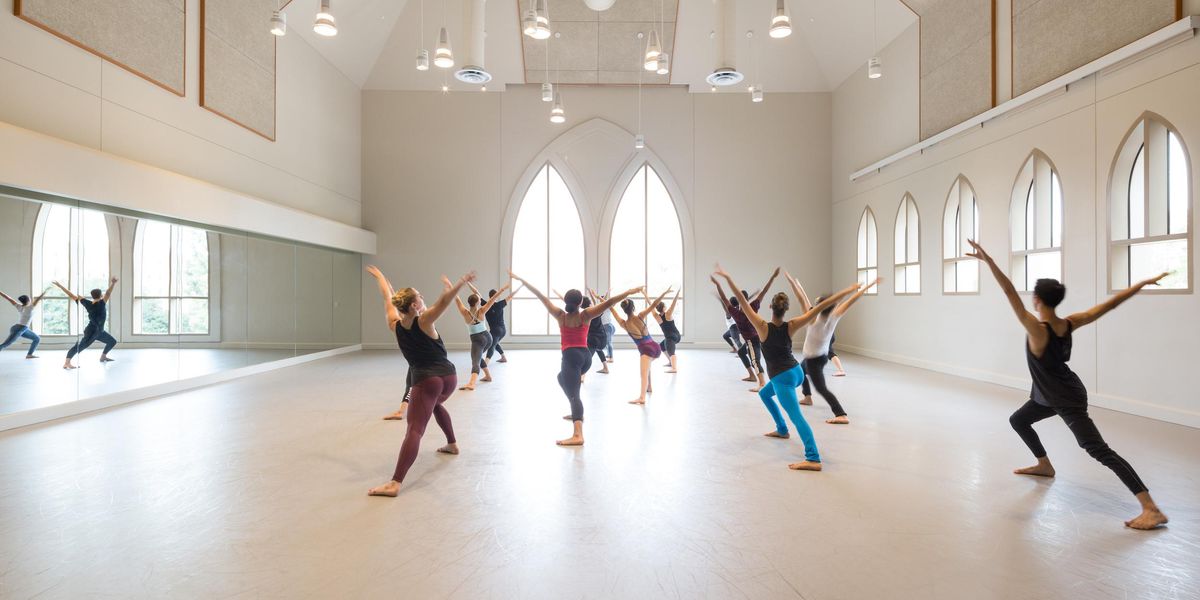Letter from Venice
Known for its spectacular art, architecture, music, and the gently lapping waters of its famed canals, Venice has recently joined the ranks of cities playing host to edgy European dance festivals. The dance portion of the Venice Biennale—the grande dame of contemporary art exhibitions founded in 1895, one that has also included a film sector since 1932 (cue A-list movie stars each August)—is now celebrating its eighth edition. As for me, I couldn’t be happier wandering around the pigeon/tourist-laden San Marco Square (Napoleon dubbed it “the drawing room of Europe”), or even getting lost on Venice’s splendid streets in search of performances that range from the intimate and sublime to more traditional, by-the-book-type offerings.
Under the artistic direction of Ismael Ivo (past directors have included Carolyn Carlson and Frédéric Flammand), this 16-day extravaganza, “Awakenings” (June 8–24), takes full advantage of the city’s unique venues. Indeed, if dance is a religion for some (and it certainly is for me), it seems appropriate that the first performance I attend, on June 16, is held in the centuries-old St. George’s Anglican Church. An audience of about 30, we’re seated at the front of the space, facing away from the altar, when the lights dim and six women pop up from the small wooden pews to begin Shobana Jeyasingh’s TooMortal.
Rathimalar Govindarajoo and Kamala Devam in Shobana Jeyasingh’s
TooMortal.
Photo by JP Masclet, Courtesy Biennale.
Set to a remix of James MacMillan music, the 20-minute world premiere features the sextet slithering on top of and around the narrow pews, at times isolating their heads, arms, and legs to create a series of kinetic but disjointed paintings, occasionally in unison or fugally. Surprising, sumptuous, and beatific, the meditative work proves a silent confessional, with the dancers tossing their hair, arching their backs, and carrying secrets in their bodies they’re willing to share—with those willing to learn. I love the work so much, in fact, that I return for the final showing (Shobana Jeyasingh Dance performed three times on each of three nights), filled with joy, knowing that the troupe, who celebrates its 25th anniversary next year, is spreading a beautiful dance gospel. (The piece next travels to London, Stockholm and Belgrade—see it if you can.)
Konstanze Mello of Teatro Castro Alves.
Photo by Ramonah Gayã, Courtesy Biennale.
Punctuating my first night in Venice with a scrumptious chocolate and whipped cream gelato (vino comes later), I return to my hotel behind the Doge’s Palace, where I turn down the Murano glass chandelier and fall into a dance-induced, jet-lagged sleep, excited for the next day’s presentations. Not for nothing has Venice been called the Queen of the Adriatic, where the famed 16th-century Arsenale—the historic docks and shipyards that once employed an army of 16,000—has been home to the Biennale since 1980. In 1999, parts of the Arsenale’s vast warehouses were converted into theaters, which is where I head on Sunday for some wildly disparate performances.
In the afternoon I’m escorted into a series of makeshift “cabins”—6 feet tall by 6 feet deep by 3 feet wide—where I am spectator to a solo performance given by individuals from Bahia’s Balé Teatro Castro Alves. Called 1Por1Praum, the show consists of 10 cabins, allowing for 10 possibilities, all created by the troupe’s director, Jorge Vermelho. I make it through five of these miniatures, beginning with a private showing by Konstanze Mello, whose big blonde wig and chalky make-up obscure the performer’s gender, which I finally ascertain is female. Rising slowly, she plays with her wig and fiddles with a faux nesting doll contraption attached to her garb beneath the breastbone. Wow! Quel terpsichorean fun house, although the heat in the booths makes for some heavy Italian claustrophobia…so I take my leave after sharing a session with Ticiana Garrido. Shirtless and moving yoga-like in red trunks, he eventually outlined his body in chalk, a finale that was eerily reminiscent of a crime scene procedural.
Teatro Castro Alves in
A quem possa interessar with the singer Badi Assad.
Photo by Adenor Gondim, Courtesy Biennale.
Grabbing a pizza and small carafe of red wine at Rossopomodoro, directly behind San Marco, I watch the passing parade dragging strollers and toting designer bags, no doubt filled with Venetian glass, masks, silks, and Italianate tchotchkes, before returning to the Arsenale for the Bahian company’s A quem passa interessar. A 70-minute performance that is accompanied by superstar musician/singer Badi Assad, who plays guitar and African thumb piano, as well as providing percussion with vocal cluckings and claps, this meta-entertainer is, perhaps, too much of the show, which features the troupe of 24. Choreographed by Henrique Rodovalho, this Italian premiere includes voice-overs of the dancers talking about themselves as they are showcased in individually-illuminated squares. With numerous performers over 40, the piece is pleasantly sweet and the moves eclectic, though nothing radical: From Brazilian Samba-esque hip swivelings to quirky, whole-body gyrations, the smiling dancers are likeable enough, and, as each tells his/her own story (in Portuguese with Italian subtitles, both languages foreign to this scribe), each persona comes across as unique, no matter nationality, body type, age, or gender.
A perfect fit for Venice, a city that opens its arms (expensive ones, alas), to welcome the world into its winding alleys, mind-blowing scenery, and ever-bustling canals. I’ll be blabbing again in a few days from Venezia, where upcoming performers include Koffi Kôkô, Wim Vanekeybus and Sylvie Guillem, who receives the Golden Lion for Lifetime Achievement. Ciao for now.




